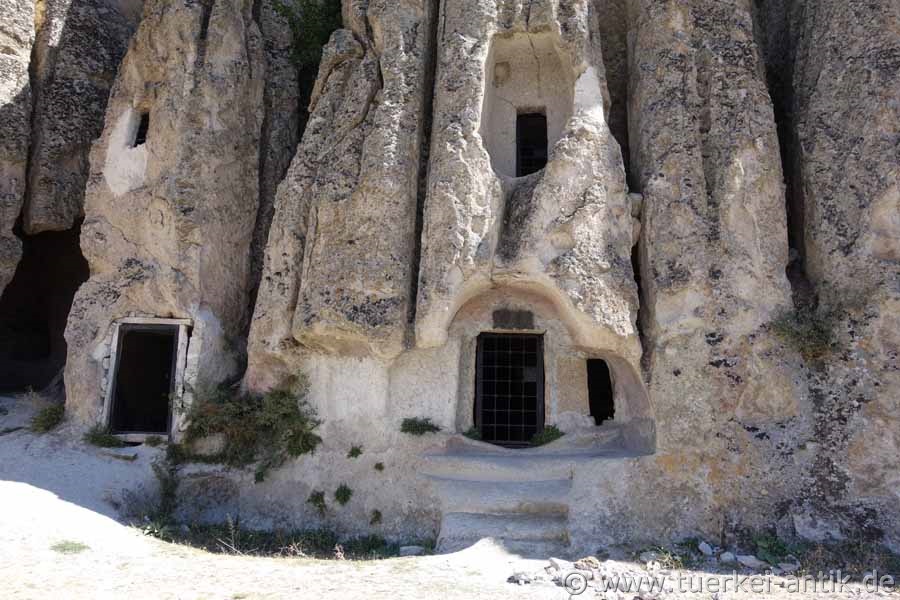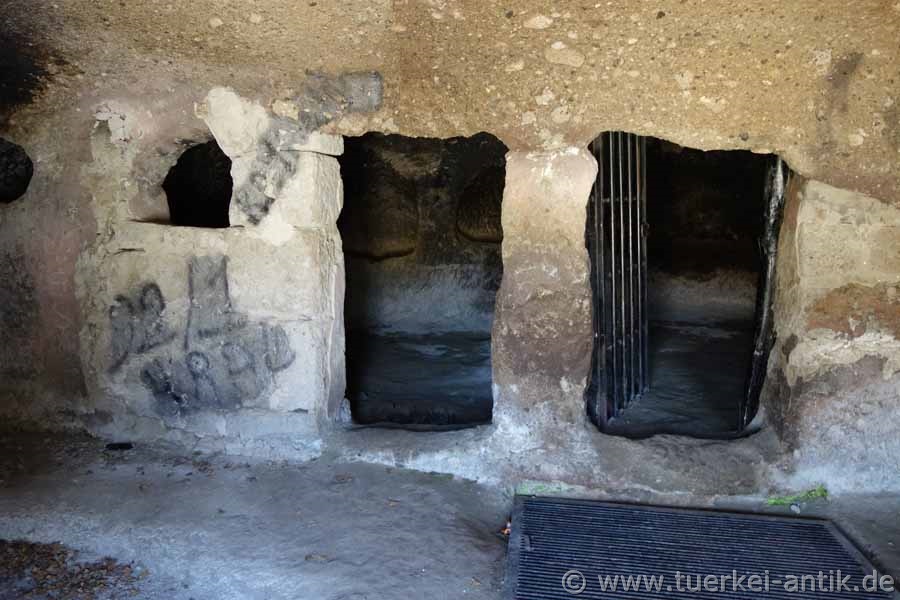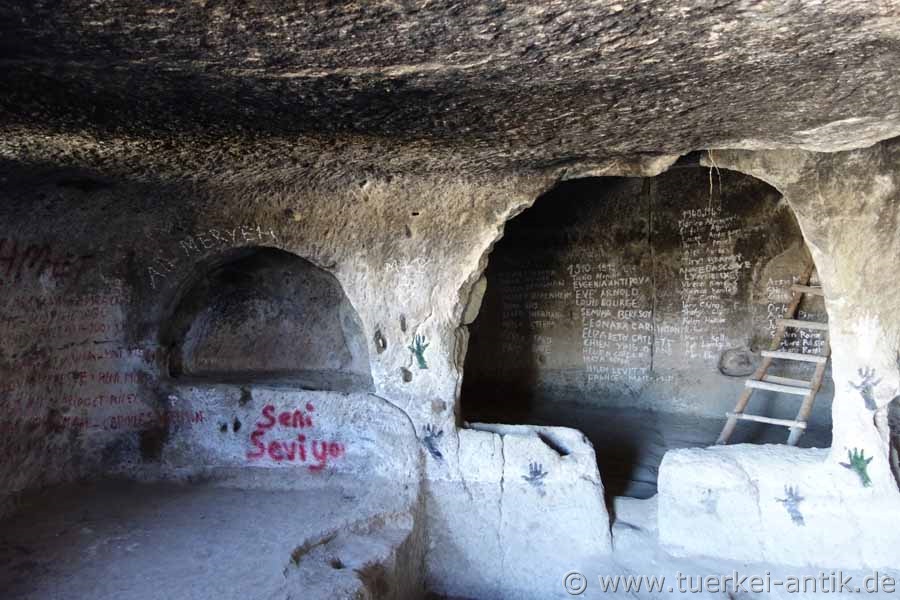 |
| Kilistra / Lystra | |||
 |
|
||
| The cave churches of Kilistra | |||
|
When one deals with the history of Kilistra, one encounters different statements and interpretations. The descriptions of the ancient settlements of Kilistra and Lystra are also interwoven, although the villages are 17 km apart.
The same applies to the ancient road via which the apostle Paulus visited Lystra and/or Kilistra. |
|||
|
|
|||
| The Via Sebaste at Maximianupolis | |||
|
It is proven that the apostles Paul and Barnabas came twice to Perge on their first mission journey (Acts 13:13-14 and 14:25) and from there went further north (Antioch in Pisidia) or east (Iconium). It is understandable that they used the Via Sebaste for their journey. |
|||
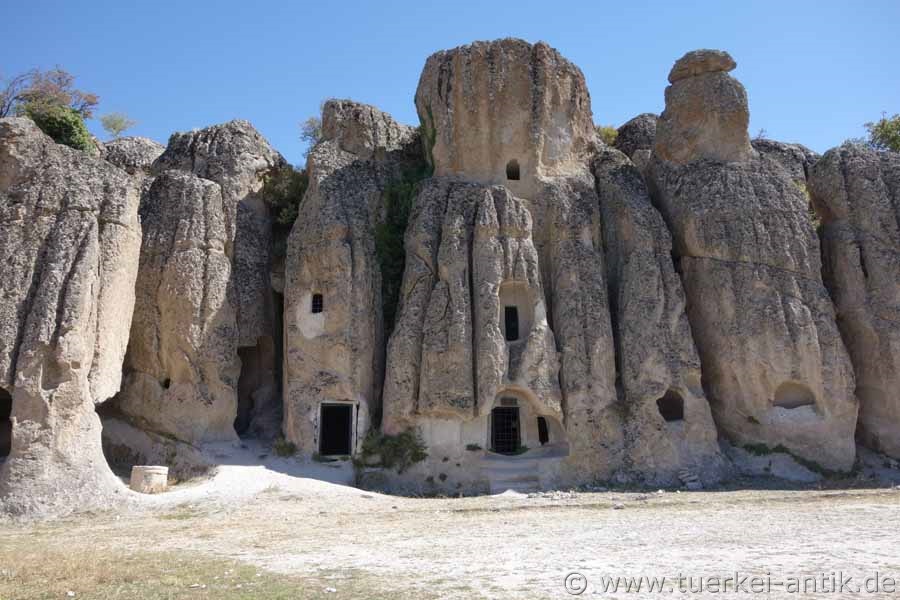 |
|||
|
|
|||
| Kilistra | |||
|
Kilistra was most probably founded in the Hellenistic period, in the 2nd century BC. It lies within the boundaries of the present-day village of Gokyurt, 17 km southeast of ancient Lystra - today near the village of Hatunsaray. Evidence suggests that the soft tuff led to Kilistra serving as a refuge for the inhabitants of Lystra. Therefore, the names of both sites are closely linked. It is considered certain that there is an underground town beneath the hill on which the present village of Gokyurt was built.
Lystra itself received the title of a Roman colonia (Colonia Iulia Felix Gemina Lystra) under Augustus and was assigned to the province of Galatia. Here the apostle Paul preached the gospel together with Barnabas during his first missionary journey in 48 A.D., after both had fled from Ikonion. |
|||
|
|
|||
| Inside a cave church | |||
|
|
|||
| View from the village to the cave churches | |||
|
|
|||
|
Ein epitaph from Roman times, skilfully used by a modern villager as the threshold of a house, confirms the old name of the settlement.
Traces of settlement in Kilistra point to a Hellenistic and Roman period (2nd century BC - 3rd century BC) of settlement. |
|||
|
|
|||
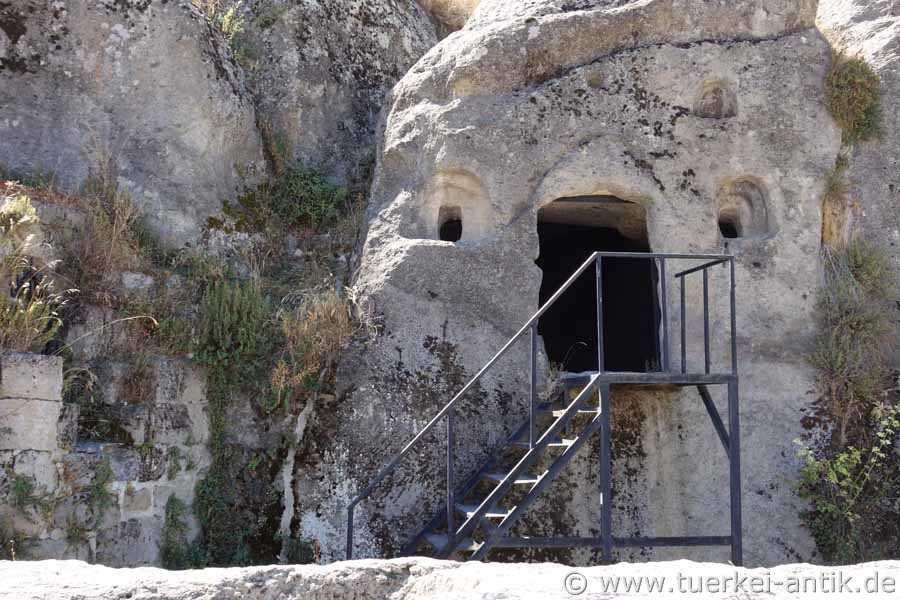 |
|||
| Cave dwellings in the village | |||
|
|
|||
|
|
|||
| Ceramics workshop | |||
|
In the Byzantine period, the cave dwellings were extended, interconnected and merged into underground settlements. As we know such underground cities from Cappadocia, they were not visible from the outside. The builders were also masters of camouflage. Even chimney openings were so well camouflaged that they could only be recognized as such from the outside in the immediate vicinity. The upper floors were mainly furnished as living rooms and bedrooms, but also housed a wine press, churches and a monastery complex. Pets were also kept underground. On the lower floors there were cisterns as well as meeting and storage rooms. |
|||
|
|
|||
|
|
|||
|
Cave dwellings in the village |
|||
| Photos: @chim, Monika P. | |||
| Translation aid: www.DeepL.com/Translator | |||
| Source: Wikipedia and others | |||
|
|
|||

